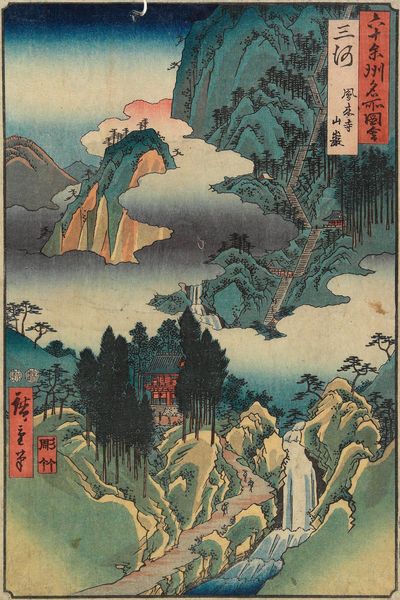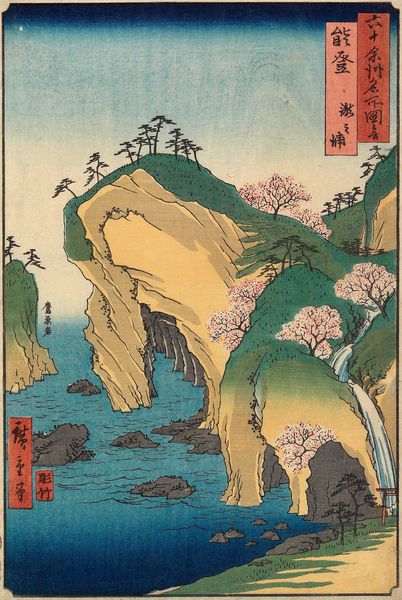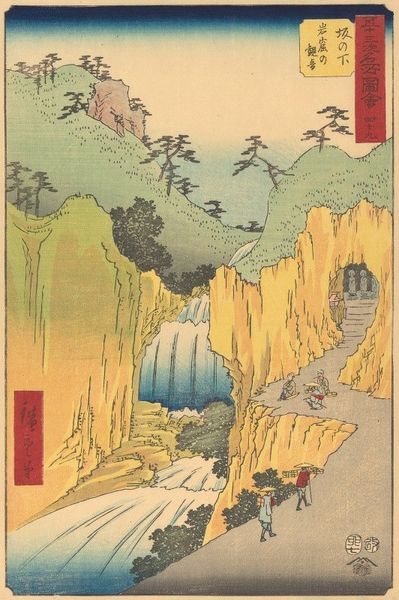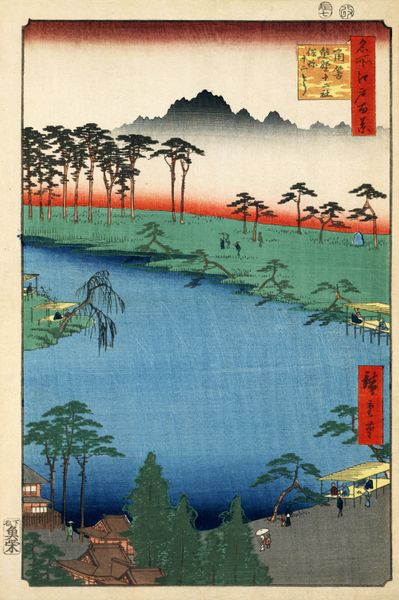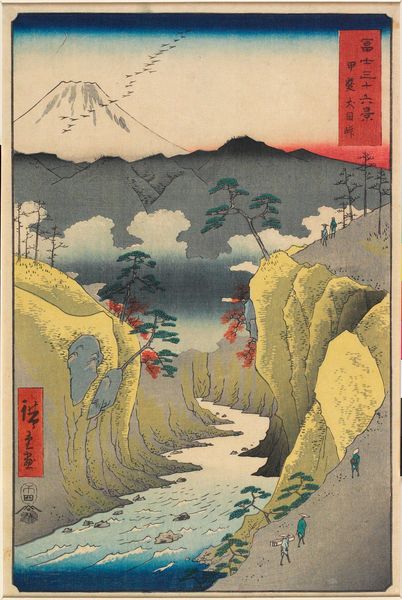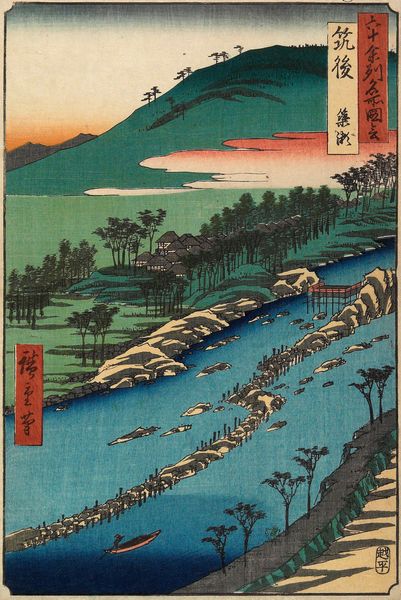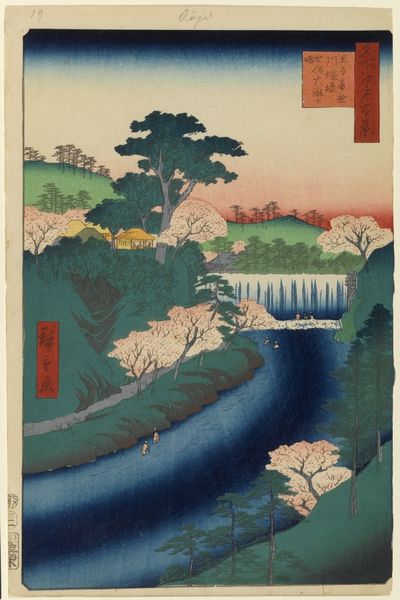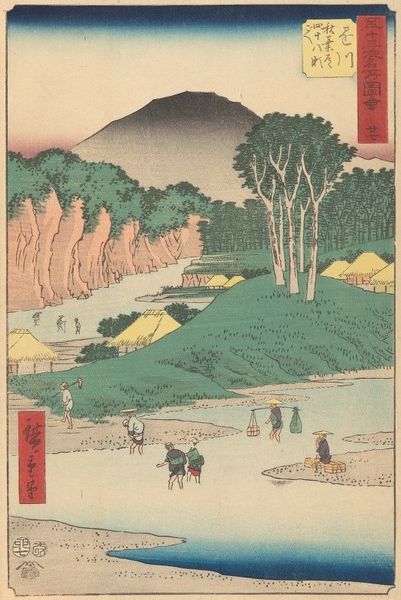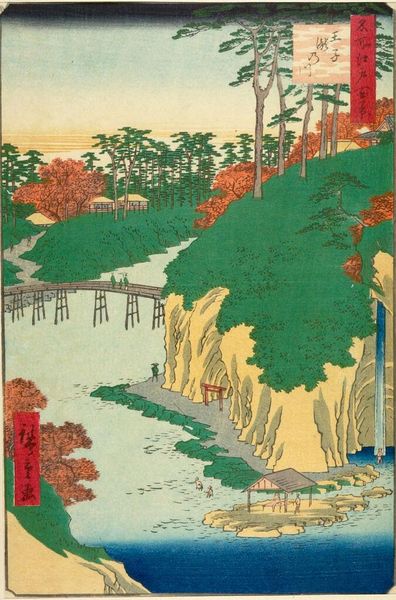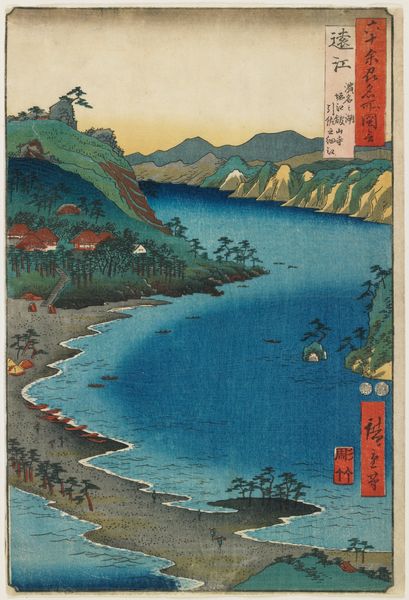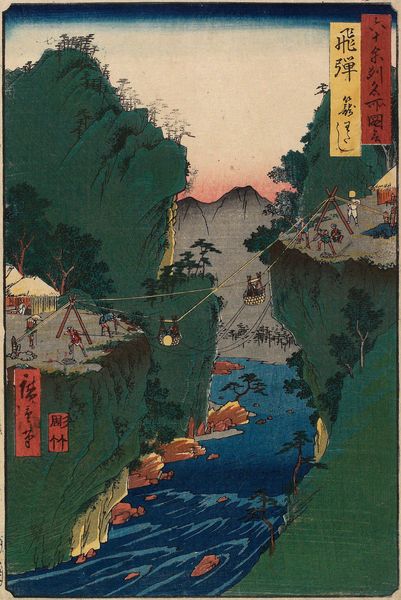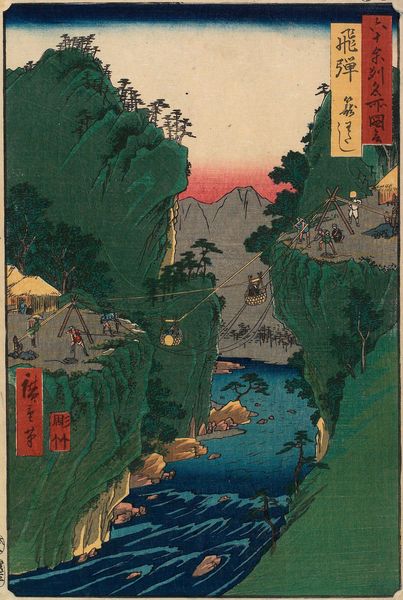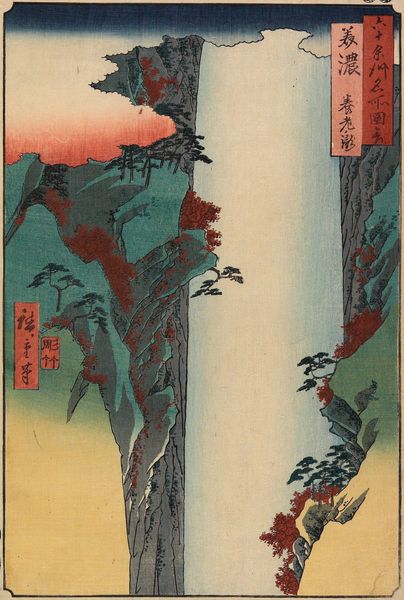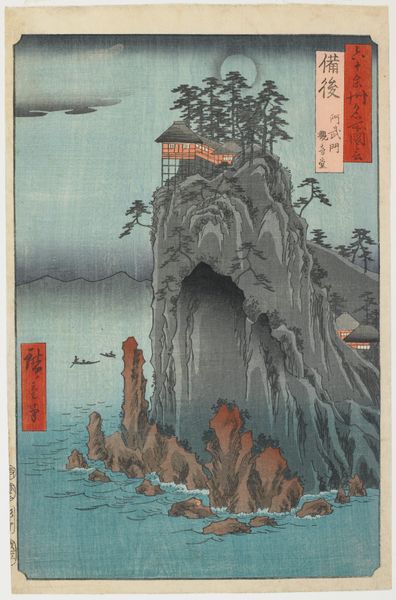
print, watercolor, ink, woodblock-print
# print
#
asian-art
#
landscape
#
ukiyo-e
#
japan
#
watercolor
#
ink
#
woodblock-print
#
watercolor
Dimensions: 13 7/16 × 8 3/4 in. (34.2 × 22.2 cm) (image, vertical ōban)
Copyright: Public Domain
Editor: This vibrant woodblock print, "Bitchū Province - Gōkei," possibly from 1853, by Utagawa Hiroshige, really captures my attention with its powerful waterfall cascading between rocky cliffs. It feels very serene and majestic at the same time. What do you see in this piece? Curator: I see a landscape, yes, but also a reflection of the social and political landscape of Edo-period Japan. Hiroshige wasn't just painting pretty pictures; he was embedding observations about the relationship between humanity and nature, particularly at a time when societal structures were quite rigid. This seemingly innocent scene contains coded social commentary. Notice how small the human figures are in comparison to the vastness of nature? What might that imply? Editor: Perhaps it's about our insignificance in the grand scheme of things? Or maybe a statement on the limited impact we have on nature itself? Curator: Exactly! It invites questions about our place and our power within larger systems, like those within feudal Japan. Furthermore, the act of representing a specific place, like Bitchū Province, gave rise to regional identities and a shared cultural space that helped solidify a Japanese consciousness that superseded more localized identities. The very popular Ukiyo-e prints themselves broke down barriers, allowing many levels of society to enjoy this expression. Editor: That’s fascinating. I hadn’t considered it as something more than just a landscape. I was stuck on the beautiful technique. Curator: The technique is brilliant, but it always served a purpose. For instance, what does it mean that landscape is deemed a suitable subject to create and circulate widely, instead of portraiture of the nobility, for example? These details are all culturally significant, and hint at how visual art and society were influencing each other. Editor: I've definitely learned to look at art with a more critical and historical eye, appreciating how it reflects society's deeper currents. Thanks for expanding my understanding. Curator: My pleasure. Thinking about the societal implications invites a much richer viewing experience, wouldn’t you agree?
